Rock Drill | Working | Types | How To Choose Rock Drill
What Is Rock Drill
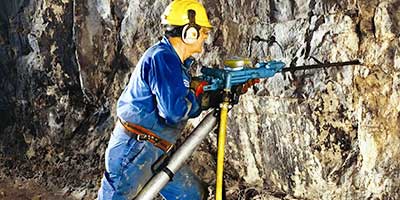
Rock Drill is a kind of digging machinery, which is widely used in road construction, infrastructure construction, mining and other industries. Rock Drill is an important machine in stone mining, it can drill holes in the rock layer and put explosives into the rock to blow up the rock, in addition, Rock Drill is also commonly used as a destructor to break the hard layer of concrete.
How Rock Drill Work
When the rock drill is working, its internal piston will undergo high-frequency reciprocating motion, which continuously impacts the drill tail. Under the action of impact force, the drill bit (usually in a pointed wedge shape) will crush the rock and chisel it into a certain depth, forming a dent on the rock.
When the piston retracts, the drill bit will rotate at a certain angle. Then, the piston moves forward again, impacting the drill tail and forming another new dent. The fan-shaped rock block between the two dents will be sheared by the horizontal force generated by the drill bit.
This process will continue as the piston continuously impacts the drill tail, forming multiple indentations, thereby breaking the rock. At the same time, the rock drill will continuously input compressed air or pressure water from the center hole of the drill bit to discharge the rock slag outside the hole, ensuring smooth drilling.
Different types of rock drills may have different working principles, but they are all based on the principle of impact crushing to break rocks.
Rock Drill Classification | Types of Rock Drill
There are many different classifications of rock drills, and the application scenarios of different rock drills are also different.
(I) Types On Basis of Operation Method
① Handheld Rock Drill
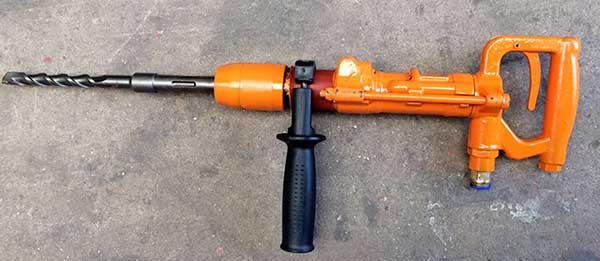
Handheld rock drills use compressed air as power to drill holes, commonly known as hand drills. Lightweight, usually weighing less than 25 kg, can be drilled with small diameters and relatively shallow holes. It is rarely used in underground mines nowadays because it requires manual operation, low impact energy, and relatively slow rock drilling speed. Handheld rock drills mainly come in models such as y3 and y26.
② Air Leg Rock Drill
The air leg rock drill is supported and propelled by the air leg, which reduces the labor intensity of the operator. The drilling efficiency is higher than that of handheld rock drills, and it is widely used in mining operations. The main models of pneumatic rock drills include yt23, yt24, yt25, yt28, ytp26, etc.
③ Upward Rock Drill
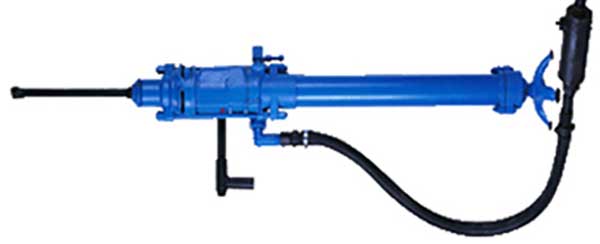
An upward rock drill, also known as a telescopic upward rock drill, has its air legs connected to the main engine on the same longitudinal axis, specifically designed for drilling upward holes. Generally weighing around 40 kg, it is mainly used for rock drilling operations in mining areas and courtyards. The commonly used model of upward rock drills is YSP45.
(Ⅱ) Types On Basis of Power Source
① Gasoline Rock Drill
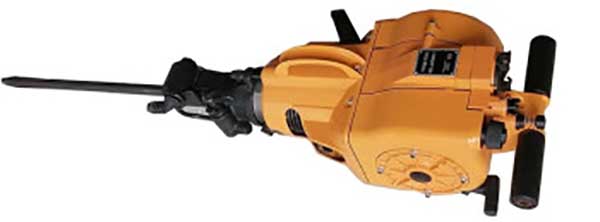
Gasoline rock drills use the explosive force of gasoline to drive the piston to impact the steel drill bit, mainly used in construction sites without power or gas sources.
The gasoline rock drill only needs to move the handle to start working, which is convenient to operate, time-saving, and labor-saving. The drilling speed is also fast, and the work efficiency is high. And it can adapt to working environments from minus 40 degrees to plus 40 degrees, also known as internal combustion rock drills. There are mainly two models, YN27C rock drills and YN27 rock drills.
② Hydraulic Rock Drill

The hydraulic rock drill uses high-pressure oil as the power to drive the piston to impact the drill bit, with an independent rotary mechanism. The piston is controlled by a valve to perform reciprocating motion, and the drilling speed is more than twice that of the pneumatic rock drill.
Hydraulic rock drills have fast drilling speed, high torque, high frequency, high impact power, low energy consumption, and high efficiency. The service life of hydraulic rock drills is long, and the incidence of stuck accidents is low. The commonly used is the yyt28 fully hydraulic rock drill.
③ Pneumatic/Air Rock Drill
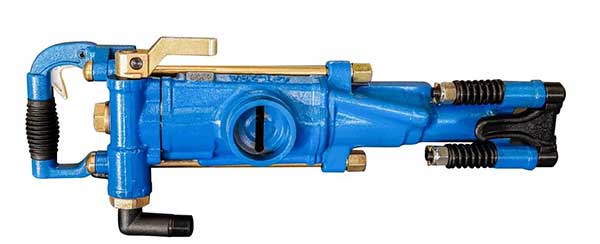
Pneumatic rock drills are impact drilling machinery powered by compressed air. There are four main propulsion methods for pneumatic rock drills, namely handheld, telescopic upward, pneumatic leg, and guide rail rock drills.
Pneumatic rock drills are suitable for various indoor operations, with simple operation, light weight, and less air consumption. Common models include handheld pneumatic rock drills such as Y6 and Y20.
④ Electric Rock Drill
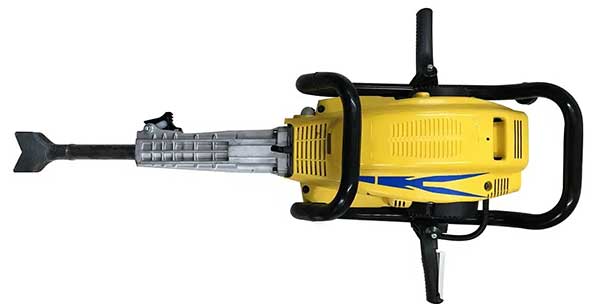
The electric rock drill is connected to the electric motor and hammer head through a crank connecting rod machine. The force exerted by the electric motor impacts the steel drill bit, which then chisels the rock. The powder is then discharged by the powder discharge mechanism.
Electric rock drills have low noise, no exhaust gas pollution, and are easy to manage. They are suitable for simple operating environments such as small and medium-sized mines. Electric rock drills have the highest energy utilization rate among all types of rock drills, ranging from 50% to 60%.
(Ⅲ) Types On Basis of Walking Mode
A walking rock drill, also known as a rock drilling rig or mobile rock drill, is an efficient and flexible rock drilling equipment. It is usually equipped with tracks or tires for movement at construction sites such as mines, tunnels, and hydraulic engineering. Common walking rock drills include:

- ① Rail Type Rock Drill
- ② Tire Type Rock Drill
- ③ Crawler Type Rock Drill
The walking rock drill has the following characteristics:
- Efficiency: The walking rock drill adopts an automated control system and high-performance rock drilling equipment, which can quickly and accurately complete drilling operations.
- Flexibility: Equipped with tracks or tires, walking rock drills can move freely in complex construction environments, adapting to various operational needs.
- Safety: Walking rock drills are usually equipped with safety protection devices, such as dust covers, shock absorbers, etc., which can reduce operational risks and ensure the safety of construction personnel.
- Intelligence: Some advanced walking rock drills also have intelligent functions, such as automatic positioning, automatic navigation, fault diagnosis, etc., which can further improve construction efficiency and quality.
How To Choose A Rock Drill
When choosing a rock drill, multiple aspects need to be considered:
- Engineering Requirements: Firstly, you need to clarify your engineering requirements, including rock hardness, concrete thickness, required drilling depth and diameter, etc. This will help you determine the specifications and models of the rock drill you need.
- Power Source: It is necessary to choose the appropriate power type based on the conditions of the engineering site. For example, if there is a stable power supply on site, an electric rock drill may be a good choice; If there is no power supply on site, pneumatic or gasoline rock drills may be more suitable.
- Performance & Parameters: When choosing a rock drill, you need to consider its performance parameters. The higher the power, the faster the rock drilling speed; The higher the efficiency, the less energy consumption. Secondly, the reliability, durability, and maintenance of rock drills should be considered. A reliable rock drill can reduce downtime and maintenance costs. In addition, it is necessary to consider the weight and size of the rock drill for easy portability and use.
- Price & Budget: The price of rock drills varies depending on factors such as model, performance, and brand. Choose the appropriate rock drill according to the budget
- Safety: A rock drill is a high-risk tool that requires selecting a rock drill that meets safety standards, is equipped with necessary safety protection devices (such as dust covers, shock absorbers, etc.), and complies with usage regulations and safety operation requirements.
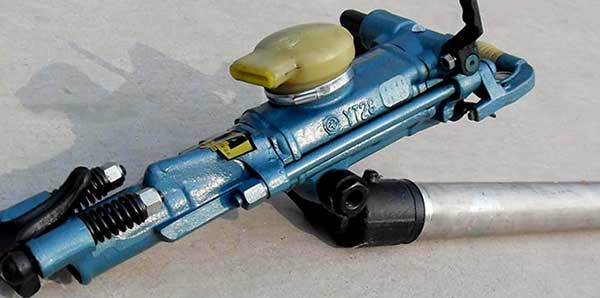
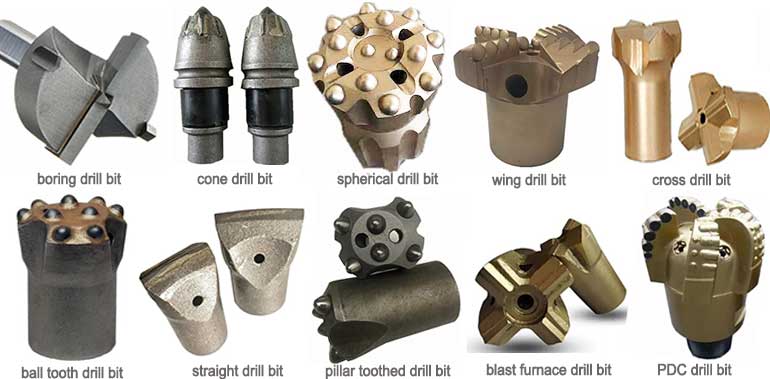 10 Types of Rock Drill Bits | How To Choose Drill Bits
10 Types of Rock Drill Bits | How To Choose Drill Bits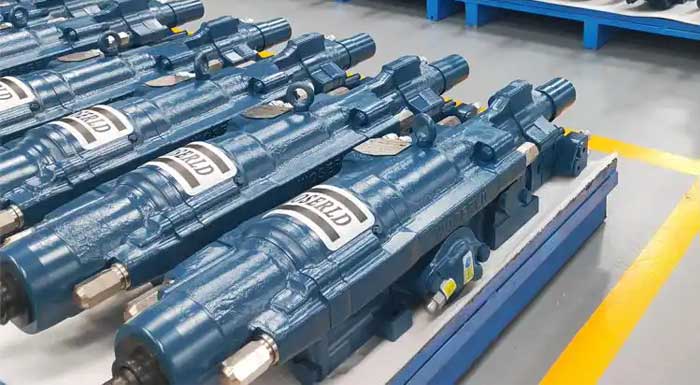 15 Troubleshooting and Solutions for Hydraulic Rock Drill
15 Troubleshooting and Solutions for Hydraulic Rock Drill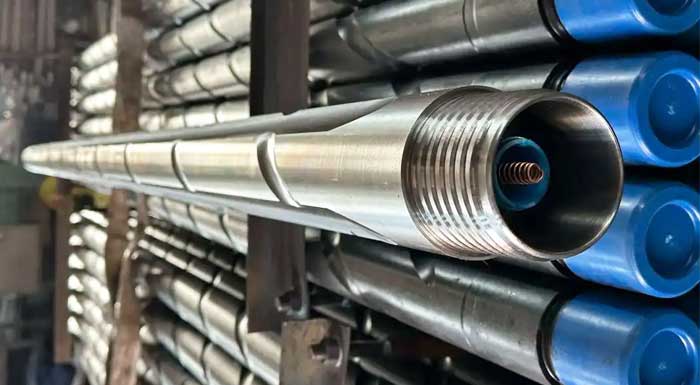 How To Solve Drill Rod Jamming Faults [ Top 6 Tips ]
How To Solve Drill Rod Jamming Faults [ Top 6 Tips ]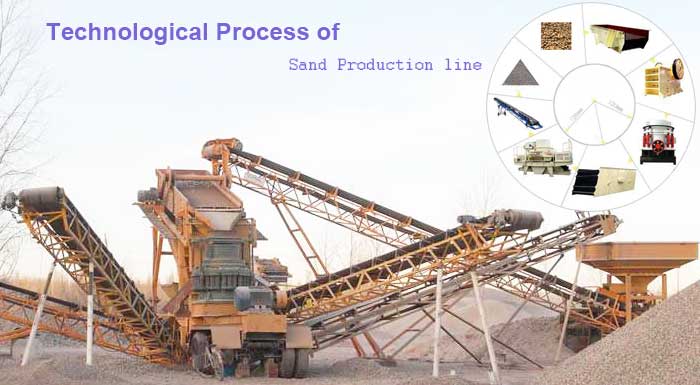 Top 10 Vibrating Screen Types & Working Principle [How To Choose]
Top 10 Vibrating Screen Types & Working Principle [How To Choose]



main rock drill operator hun MAKKAH se Saudi Arab
rock drill operator hun MAKKAH se Saudi Arabmujhe job chahiye